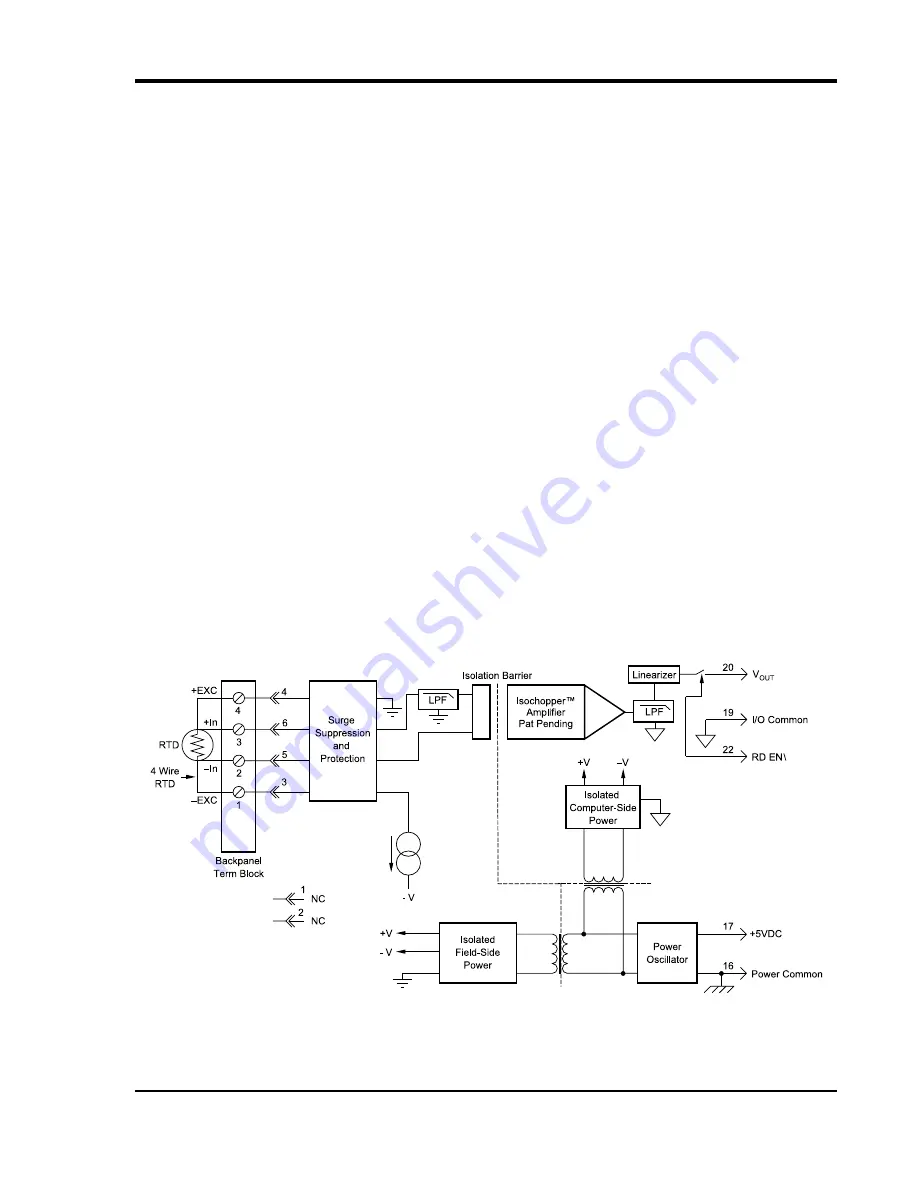
DI–710 Series and DI-715B Series Hardware Manual
Accessories
59
DI-5B35 Linearized 4-Wire RTD Input Modules
In RTD temperature measurement applications requiring a very high level of accuracy, the DI-5B35 4-Wire RTD
input module offers a significant advantage over 3-wire measurement techniques (see block diagram). The DI-5B35
measures only the voltage dropped across the RTD and almost completely ignores the resistance or length of the RTD
lead wires. The DI-5B34 3-Wire RTD module provides lead resistance compensation, but requires equal lead resis-
tances, while the DI-5B35 does not require matched lead resistances.
Each DI-5B35 RTD input module provides a single channel of RTD input which is filtered, isolated, amplified, lin-
earized, and converted to a high level analog voltage output. This voltage output is logic switch controlled, which
allows these modules to share a common analog bus without the requirement of external multiplexers.
The DI-5B modules are designed with a completely isolated computer side circuit which can be floated to ±50V from
Power Common, pin 16. This complete isolation means that no connection is required between I/O Common and
Power Common for proper operation of the output switch. If desired, the output switch can be turned on continuously
by simply connecting pin 22, the Read-Enable pin to I/O Common, pin 19.
RTD excitation is provided from the module by a precision current source. The excitation current is available on two
leads which are separate from the two input signal measuring leads. The excitation current does not flow in the input
signal leads, which allows RTD measurement to be totally independent of lead resistance. The excitation current is
very small (0.25mA for 100
Ω
Pt and 120
Ω
Ni, and 1.0mA for 10
Ω
Cu) which minimizes self-heating of the RTD.
Signal filtering is accomplished with a six-pole filter which provides 95dB of normal-mode-rejection at 60Hz and
90dB at 50Hz. Two poles of this filter are on the field side of the isolation barrier, and the other four are on the com-
puter side. After the initial field-side filtering, the input signal is chopped by a proprietary chopper circuit. Isolation is
provided by transformer coupling, again using a proprietary technique to suppress transmission of common mode
spikes or surges. The module is powered from +5VDC, ±5%.
A special input circuit on the DI-5B35 modules provides protection against accidental connection of power-line volt-
ages up to 240VAC.
















































